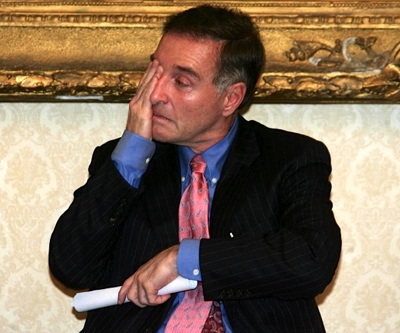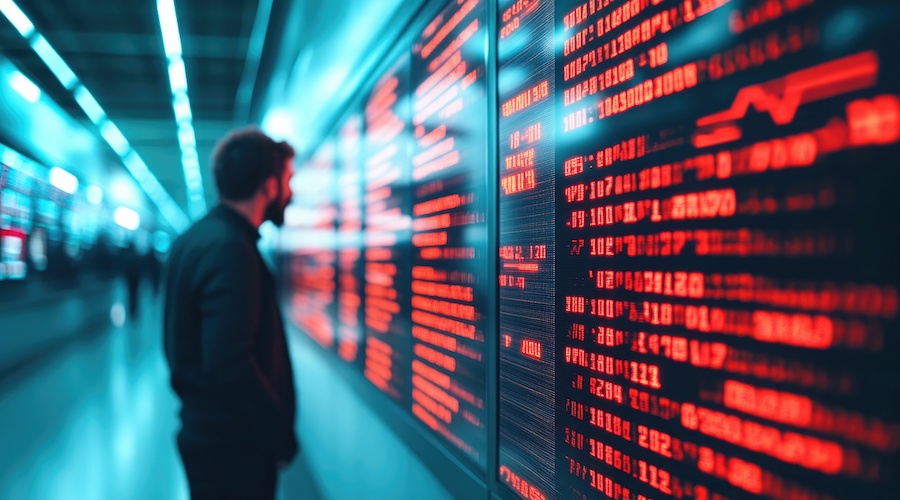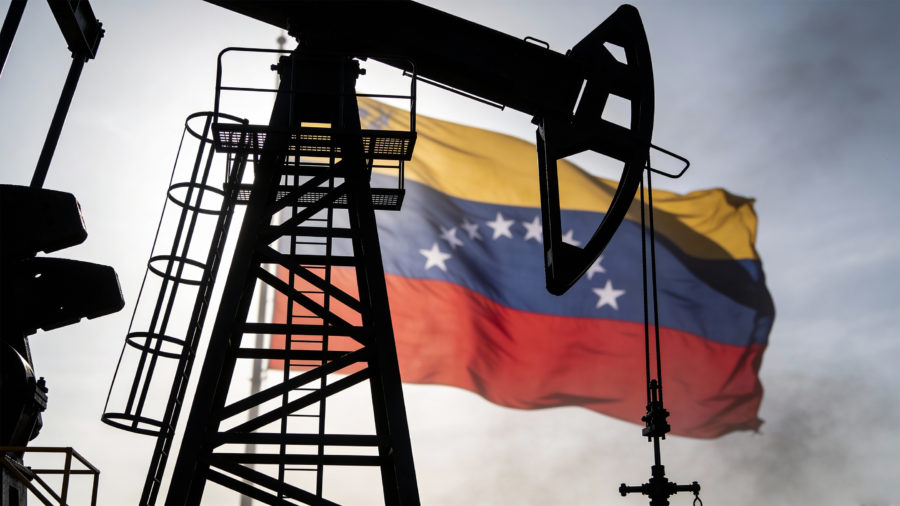Suspicion grows over events that led Batista’s oil firm to bankruptcy

Suspicious investors are asking Brazil’s federal prosecutors to examine the role of both regulators and the stock exchange in the collapse of Eike Batista’s oil company, the former OGX Petróleo e Gás, reports FT.com (susbs. required).
OGX, the flagship of Batista’s five public “X” companies – the X representing the tycoon’s presumed ability to act as a business multiplier – finally sank in late October, becoming Latin America’s largest corporate default in history.
Stockholders, led by minority investor, Aurélio Valporto are now claiming that something fishy went on there. They believe there is a contradiction between information released to shareholders regarding the company’s oil discoveries and later changes in the firm’s plans. OGX, which has changed its name to Óleo e Gás Participações, ended up halting production and development of oil fields originally considered to have high production potential.
“Public prosecution is our only light at the end of the tunnel,” Valporto told FT, adding that he wants an answer on why Batista sold 56 million of his shares in the company a few days before OGX revealed it was suspending its only three producing oil wells.
Reserves questioned
Last month, a Brazilian newspaper said OGX knew since 2012 that oil reserves in its oil fields in the Campos basin could be much lower than initially estimated. The company replied to this accusation by saying it always kept the market informed about its production projects “as soon as the analyses were completed, to avoid divulging incomplete information.”
As late as 2012, Batista still touted estimates of more than 10 billion barrels of oil equivalent in pre-salt resources in Brazil’s Atlantic Ocean offshore coastal São Paulo, but many of OGX’s wells came up dry and failed to fulfill those estimates.
OGX’s promise has also proved costly for other Brazilian companies, such as Petrobras. The state oil firm has divested assets outside Brazil to help reduce debt that it incurred by investing in complex drilling technology and services to tap into the hyped oil resources. Consequently, Petrobras reduced its international operations from a presence in 23 countries during 2012 to 17 countries as of November 2013.
Eike, as he prefers to be called, founded OGX only five years ago with $1.3 billion.
More News
Most mineral and metal prices to edge higher in 2026, Fitch forecasts
Country Risk team expects broad tariff uncertainty to continue to decline over 2026.
January 05, 2026 | 04:37 pm
Venezuela’s oil and mining sectors: large potential, weak infrastructure
January 05, 2026 | 02:19 pm
{{ commodity.name }}
{{ post.title }}
{{ post.date }}






Comments
Aurélio Valporto
OGX is the biggest fraud of XXI century. This fraud was only possible because it took place in Brazil, where the regulator, CVM, is negligent and stock exchange, BM&FBovespa, is colluded (intentionally? maybe). CVM and BM&FBovespa simply ignored its legal obligations and, in at least one case, CVM accepted money from Eike Batista and Jose Olympio (CEO of Credit Suisse) to vanish with the investigation it was conducting about the market manipulation crime during the “quiet period”. In this case both manipulated the market to achieve the exercise of greenshoe option, and they had success, the greenshoe exercise generated about US$ 400 million more to OGX and, probably, more than US$ 50 million of instantly cash to those that received the greenshoe options, without any risk, as they sold the shares during the first session BEFORE they actually exercise the options from OGX. It is a very serious crime, but CVM legally accepted money from them (ridiculous US$ 50.000 from Eike and US$ 25.000 from Jose Olympio) to “bury” the process. CVM call this “termo de compromisso”, for me it is, in the last instance, an euphemism to legalize the corruption. It is the same thing of steal $ 1 billion from a bank, give the police 100 boxes and go home with $ 999.900.000. And the bank? The bank keep the 1 billion losses. How can you have a serious market in Brazil if the regulator acts this way???
OGX fraud generated US$ billions of gains to cheaters and same losses to investors. To achieve this goal OGX, Eike Batista and directors lied to the market, hiding the truth about the wells, and did statements that production would be largely increased, including declaring commercial some wells they already knew the oil extraction from weren’t feasible. At the same time the insiders were short selling OGX shares to the investors that believe them. The short selling volume of OGX shares was the higher in the Brazilian stock exchange market history. The historical limit to short selling operations were 20% of the free float, established by BM&FBovespa, the stock exchange operator, but as it was reaching this limit (march 15, 2013) BM&FBovespa increased the limit to 30%, exactly when OGX was declaring commercial wells that would contain, according the company, almost 900 million barrels of oil (recent documents proved they knew since july 2012 the wells were dry). So the insiders “pumped” the market with these good news to “dump” with more short selling operations. In may, 9th, 2013, OGX announced that reached an agreement to sell 40% of Tubarao Martelo oil field to Petronas. Due these good news the OGX shares opened the session in stock exchange market with a gap of 9% high. During this session the limit of 30% of the free float for short selling operations was reached, but the insiders could not loose the opportunity to sell more and more, so, without warning, DURING the session, BM&FBovespa increased the short selling limit to 50% of the free float, despite the apparent risk of a giant “short squeeze” and consequent risk to its clearing. Remember, the investors were buying these shares believed in the news from OGX and Eike Batista, so they didn’t have any intention to sell OGX shares, the situation seemed “explosive”. In June 7th, OGX released an institutional presentation showing the investors how the things were going well, promising oil from the wells they declared commercial in march for 2013, second half, as well a 4th well in Tubarao Azul oil field was also schedule to initiate its production in 2013, 2nd semester. But in July 1st, the company announced that all these wells were dry (or not commercial, that is the same). So became clear to all investors that all those short sellers weren’t speculators, they were insiders. The apparent “super high risk” of a “short squeeze” to the short sellers never existed, nor BM&FBovespa was placing its clearing in risk. It seems BM&FBovespa were colluded with these insiders, so we are calling for investigation into Brazilian stock exchange, for this and many other reasons.
The case above is only a sample, there were many others, for example: Eike Batista called, thru twitter, the investors to buy OGX shares. At the same time he was silently selling the shares to these investors. BM&FBovespa was obligated, by law, to promote an auction revealing who was selling, but, suspiciously, ignored the law, so Eike spent days and more days selling more than 125 million of his shares until June 13th. In his twits he could even say “we’ll present good plans, with new partners”, but few days after, on July 1st, the company announced there were no oil.
For much less Madoff is arrested.
Aurelio Valporto
PS: Petronas abandoned the business with OGX without payment. The reason: Tubarao Martelo, the oil field that OGX tried to sell 40%, has less than 1/3 of the oil inicially stated by OGX.